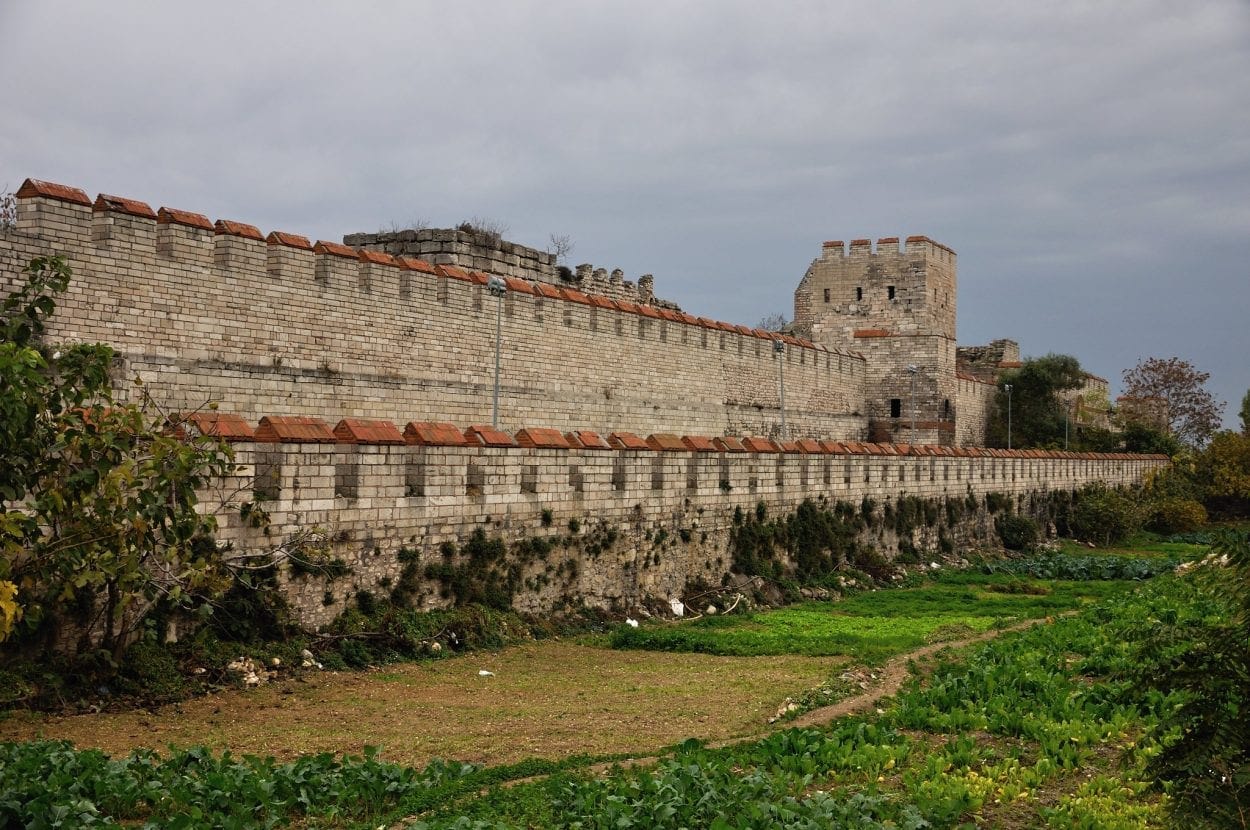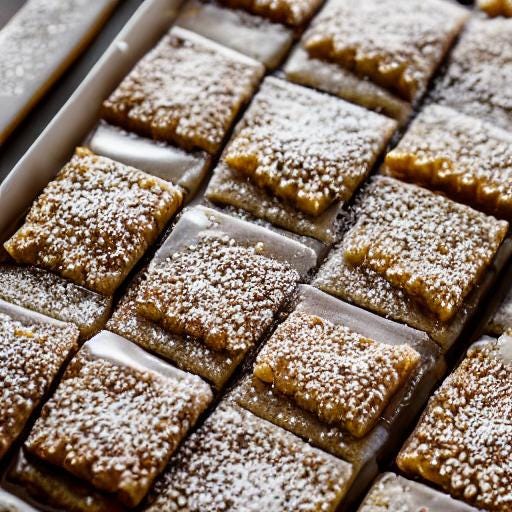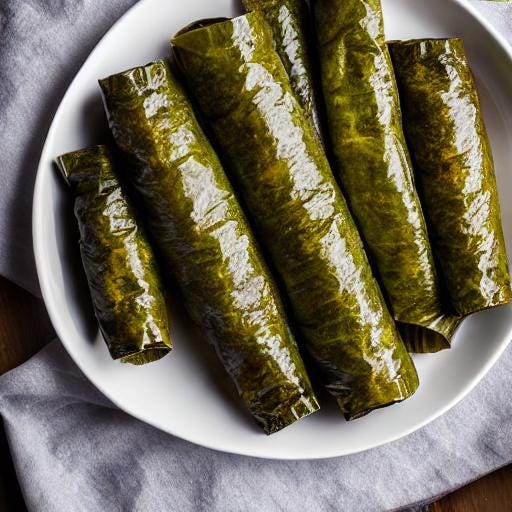Dolmades Byzantine Chicken Recipe and How the Ancient Chariot Race Teams Saved Constantinople
The time when the sports fans saved Constantinople and a dish of baked chicken and stuffed grape leaves.
Sports fans today, and particularly football fans, treat their favourite sport almost like a religion. We have all seen this, either on TV or in our group of friends. Stars have the status of heroes and team rivalries can even sometimes result in fighting and violence.
However, like many things we know in modern times, this ‘hooliganism’ and dedication is not a recent phenomenon at all; in fact, as far back as Ancient Rome, chariot racing attracted quite extreme reactions from its followers.
“Bread and circuses,” the poet Juvenal wrote scathingly in the 1st century AD. “That’s all the common people want.”
“Give them bread and circuses and they will never revolt”
(as it happened, they did revolt - in the famous Nika Riots - but that will be a story for another time)
In the capital of the Eastern part of the Roman empire, Constantinople, the part which was to outlast Rome as a power by almost a thousand years, the Hippodrome was one of the most important structures and a central feature in the life of its citizens.
Originally built by Septimius Severus at the end of the 2nd century A.D., it was enlarged by Constantine after he inaugurated his new capital in 330. In the traditional Roman style, the spina, with dolphins and eggs as lap counters, was lavishly decorated by emperors, and featured works of art which were famous throughout the Empire.

On the Hippodrome, chariot drivers and their teams of horses raced seven laps around a 2,000 foot-long sand track, where they hit top speeds of close to 40 miles per hour on the straightaways and jostled wheel-to-wheel as they hurtled around hairpin turns. Once the cloth known as a “mappa” was dropped, the charioteers jostled to move in front of each other, in an attempt to cause their opponents to crash into the central “spinae”, whilst being the first to complete 7 laps of the race.
It was sort of the ancient version of NASCAR, except with much more danger. Chariot crashes were frequent, with teams of attendants on hand to rush onto the track and clear away the wreckage and injured drivers while the race around them went on.
When the winning charioteer finally crossed the finish line, his victory was announced with the blast of a trumpet, and he ascended to the judges’ box, where he received a palm branch, a wreath and prize money. Then followed a quick victory lap, before the next of the day’s 24 races began.
There were four teams of charioteers, distinguished by colors: red, white, blue and green.
In 410AD, Rome had (shockingly for the whole ancient world) fallen to the barbarians under the rule of Alaric and was looted and sacked. Emperor Theodosius in Constantinople was determined that his city will not suffer the same fate. He ordered the current walls surrounding his capital extended and strengthened.

The walls of Constantinople were the most massive defensive structure ever to be built in the ancient or medieval world. It was a range of three walls, one built behind the other, with a large moat in front of them. The final wall was almost 5m thick and 9m high and it included 96 towers, each of a height of 20m.
Soon followed the threat of invasion by the Huns, led by their most famous leader of antiquity, Attila, whose shadow was to loom over the whole of Europe.
The Huns were a nomadic people who lived in Central Asia, the Caucasus and Eastern Europe. Formerly hired as occasional mercenaries, the Huns under Attila broke the treaties and started raiding Roman cities and coming ever closer to the heart of the empire.
Callinicus, in the Life of Saint Hypatius, wrote: “The barbarian nation of the Huns, which was in Thrace, became so great that more than a hundred cities were captured, and Constantinople almost came into danger and most men fled from it.”
Attila conquered territory throughout Gaul and into modern France and in 447 AD he marched across the Danube towards Constantinople.
In January 447, the ground shook in Constantinople and the regions around it. For 4 more months, this event was followed by more earthquakes and floods. Buildings were damaged or collapsed throughout the city. And the imposing walls, the pride of Constantinople's defence, were damaged and a whole section of the Theodosian walls were crumbled.
Emperor Theodosius II ordered the praetorian prefect, a man named Constantine Flavius to quickly repair the walls (the same walls which previously took nine years to build).
Aware of the monumental task before him, Constantine Flavius wondered how he could ever accomplish it. Eventually he came up with a plan: he reached out to the factions of the chariot teams for aid, knowing his city's great spirit of competition. Thus he gathered a massive work force of some 16,000 supporters.
The supporters agreed and set to work.
Each faction was tasked with a stretch of wall, working in competition with the other teams to complete their section first, winning the honour of victory for their team. The “Blue” team worked the stretch of walls from the Gate of Blachernae to the Gate of Myriandrion, and the “Greens” from there to the Sea of Marmara.
And so it was that in just sixty days, the great walls of Constantinople were restored and even reinforced, and the defensive moat cleaned of the fallen debris.
Hearing of the completion of the walls, Attila and his Huns must have been at least surprised. They abandoned their plans for conquest of Constantinople for the time being.
A treaty was signed and the Byzantines agreed to a payment to the Huns, who then turned their attention further West into the Balkans. The city was safe and the Eastern Empire would go on.
Pasteli Recipe
“Bread sprinkled with poppy-seed is mentioned by Alcman in Book V as follows: ‘Couches seven, and as many tables laden with poppy-bread, and bread with flax and sesame-seed; and in cups…chrysocolla.’ This is a confection made of honey and flaxseeds.”
~ Athenaeus quoting Alcman, Deipnosophistae Book 3 (early 3rd century CE)
Ingredients
1 cup honey
1 cup whole flaxseeds
Olive oil
First, toast the flaxseeds over medium heat. Stir for 5-7 minutes, until the seeds are glistening and start to jump around in the skillet. Remove from the heat. Oil a glass or ceramic dish and set aside.
In a saucepan, bring the honey to a boil while stirring with a wooden spoon. Once the honey is boiling, lower the heat, stir in the toasted flaxseeds and cook for an additional 15 minutes, continuing to stir.
Remove from the heat and spread the mixture onto the dish, smoothing it as much as possible with the back of a spoon. Let cool for 1-2 hours in the fridge, until it has set into a hard, amber-like candy. Snap the chrysocolla into pieces and place in cups.
This can be done with sesame seeds as well.
Dolmades - a dish of baked chicken and stuffed grape leaves.
As a personal note, living in the North of Estonia, this is pretty much the only use we have got from our grape plants. The leaves. At least so far. I was going to give them another year or two and remove them if they fail to produce ripe grapes, but I love stuffed grape vine leaves foods.
Ingredients
3/4 cup of olive oil
1/2 onion, chopped
8 scallions, chopped fine
2 large cloves of garlic, chopped
1 cup barley
chopped fresh dill to taste
1/2 cup parsley, chopped
juice of 1/2 lemon
salt & pepper to taste
1 cup hot water
1 jar grapevine leaves or about 500g leaves.
1 whole chicken, cut in quarters
Heat 1/2 cup of oil in a skillet and add the onion and scallion and cook until soft. Add the garlic and cook for a few more minutes.
Add barley, and brown slightly, stirring frequently, then add dill, parsley, lemon juice, salt and remaining olive oil.
Stir well and add hot water. Cover and let simmer for five minutes.
Remove the grape leaves from the jar and rinse. Line an enamel pan with a layer of leaves and set aside.
To stuff the leaves, put a leaf on the work surface with the rough side up and the stem end toward you. Place a teaspoonful of barley mixture near the stem end. Using both hands, fold the part of the leaf near you up and over the filling. Then fold the right side of the leaf over the filling and then the left side and roll tightly and away from you, toward the pointed end.
Place in the prepared pan with the seam side down. Continue until you have used all the ingredients.
Place an inverted plate on top of the dolamades and add enough water to come up to the edge of the plate. Rub the chicken with additional lemon juice and garlic and place on top of the plate.
Bring to a boil and then cover the pan, reduce the heat, and simmer for 1h and 15min. Check to see that the barley is tender and the chicken cooked.
Remove, cool and chill. Serve with sour cream.








My husband is a history buff, and every time one of your posts comes out we have an interesting conversation about it over dinner! 😊
Also, I enjoyed the Dolmades recipe, since we have grapevines…do you use young leaves from spring time, or are they okay to use through the summer?